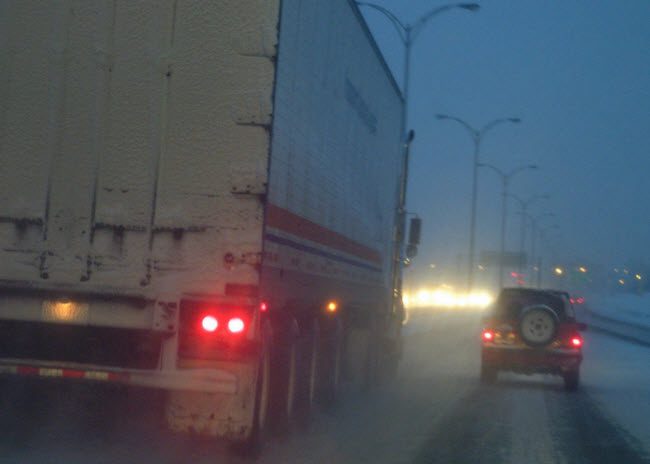You know it’s gonna be bad when the storms have names. First it was Caly, and next came Winter Storm Decima.
As you probably remember from the “snowpocalypse” in Q1 2014, when the weather outside is frightful, rates can become more delightful for carriers. On the other hand, the weather causes delays and cancellations, so trucking companies end up earning less during a storm, despite the rate increases. Shippers and freight brokers are hard pressed to find trucks, too.
Rates respond to extreme weather conditions, in three stages:
Stage 1: Outbound rates rise before a storm. If you’re a shipper, and you know the storm is coming, you want to move your freight out of the area before it hits. You’ll pay a premium to move those loads out. This is a great opportunity for carriers, and often brokers, as well. Before you accept those high-paying loads, check to be sure that you won’t get stuck at your destination — either because of snow or because of a lack of freight for the return trip.
Stage 2: Rates freeze, as trucks stay put. A lot of trucks won’t move during a big weather event. With short-term events like hurricanes, this standstill lasts for a day or two. Trucks don’t move much, and neither do rates. During the winter of 2014, the storms kept coming, hitting big swaths of the Midwest and the East Coast over and over again, so rates kept rising.
Stage 3: Inbound traffic re-starts, and rates heat up. When the roads are clear again, freight starts moving into areas that were hit by the storm. Shippers want to replenish inventories, and some communities will need relief supplies because of power outages or other challenges.

These steps are a little more complicated this year, because the storms are coming during the last-minute rush of the holiday freight season. Even though all merchandise for brick-and-mortar stores has been on the shelves since before Thanksgiving, lots of e-commerce orders are still on the move.
Parcel delivery companies are scrambling to cover the holiday orders, according to the Wall Street Journal, dragging down on-time delivery rates from 99% to just over 96% for UPS and FedEx. Those companies also remember the snowpocalypse, because that chain of winter storms started in December 2013, delaying delivery of millions of packages until after Christmas.
E-commerce and parcel freight delivery companies are consolidating some orders into truckloads, to move them from one distribution center to another that’s closer to their final destination. Then delivery trucks can pick up at a nearby distribution center, to drive a local route. That resulted in more loads available in November and December in e-commerce hubs like Denver and Memphis, while the biggest freight markets — Chicago, Atlanta, Dallas, for example — are relatively quiet.
Snow and ice may interrupt those patterns, too, creating opportunity for brokers, as well as truckers who can maneuver safely and reliably in — or around — tough weather conditions.
Be careful out there.
Find loads, trucks and lane-by-lane rate information in the DAT Power load board, including rates from DAT RateView.


